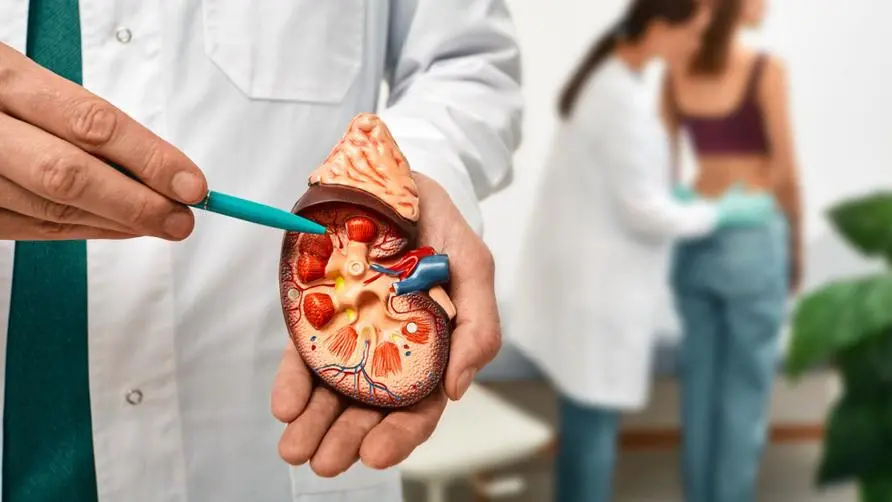Lymphedema is the most common disease in cancer rehabilitation! Understand the massage parts, key points, and precautions at once

Is lymphedema common after cancer surgery? How to Rehabilitate with Your Hands
Lymphedema is caused by the retention of lymph fluid in tissues, causing local swelling, especially after cancer surgery. Lymphedema is more likely to occur. Lymphatic drainage can promote lymph circulation, help lymph fluid drain out of the body, reduce swelling, and thereby reduce related discomfort symptoms.
During cancer rehabilitation, how to properly perform lymphedema massage and precautions for post-operative rehabilitation treatment have always been the focus of patients and their families. The latest research shows that rehabilitation therapy can effectively help cancer patients recover and improve their quality of life.
Manual lymphatic drainage is a very popular treatment that can help cancer patients reduce the symptoms of lymphedema. However, before performing manual lymphatic drainage, patients need to determine whether they are suitable for drainage, which is best done under the guidance of a professional. The specific steps for manual lymph drainage are as follows:
As a first step, the patient needs to find the location of the lymphedema, usually on the arm or leg extending from the tumor treatment site, and look carefully for any redness, swelling or pain.
In the second step, before performing lymphatic drainage, you need to clean your hands and the patient’s lymphedema skin area to make the lymphatic drainage feel more accurate.
In the third step, the direction of manual lymphatic drainage should be from the extremities to the heart to help lymph flow. Drainage force should be gentle to avoid excessive pressure that may cause pain.
The fourth step is that lymphatic drainage can be performed at any time, and can also be performed in any posture (such as sitting, lying, whether the affected area needs to be elevated…), but it is recommended to perform lymphatic drainage at regular times to develop good lymphatic care. Habit.
Which parts cannot be pushed? What are the precautions for manual lymph drainage?
It should be noted that if the patient feels pain or the redness and swelling worsen during the operation, he should stop the drainage immediately and contact the medical team in time.
In addition, exercise therapy by physical therapists is also an important part of rehabilitation for post-cancer lymphedema. However, patients need to pay attention to the following points when performing exercise therapy:
First, patients need to wear comfortable clothing; clothing that is too tight or inappropriate will not only interfere with exercise, but may also hinder circulation in the lymphedema area.
Second, exercise intensity should be moderate, and care should be taken not to cause injury, which may worsen lymphedema.
Third, please wear special compression clothing or pressure bandages during exercise in lymphedema areas to prevent swelling during exercise.
What is the role of manual lymph drainage? Wound care before and after surgery
Lymphedema is a common complication of cancer treatment that often develops within weeks or months of surgery. To help patients recover better, manual lymphatic drainage is an effective treatment method that can promote lymph circulation and reduce the symptoms of edema.
Lymphatic drainage is a special manual therapy technique that needs to be performed by a professional rehabilitation therapist. Although the general principles of lymphatic drainage are the same, the details vary from person to person and are often adapted to the patient’s circumstances and needs. But, overall, the purpose of lymphatic drainage is to encourage the flow of lymph fluid and reduce swelling and discomfort by gently pressing and massaging the lymphatic vessels and lymph nodes.
Before undergoing lymphatic drainage, patients should consult with their doctor to determine whether this treatment is right for them. If a patient has infection, inflammation, embolism problems such as blood clots, bleeding, organ failure, or other health problems, they may need to choose other treatments.
In addition, patients also need to pay attention to the following matters in terms of post-operative rehabilitation treatment:
Follow your physician’s advice. Your doctor will give you some advice about the recovery period, including what activities are safe, how to treat the wound, and other precautions. Patients should follow medical advice to ensure progress in their recovery.
Avoid heavy work. For a few weeks after surgery, patients should temporarily avoid weight bearing and strenuous exercise to avoid damage to the wound. Patients can perform appropriate exercises under the assessment and teaching of rehabilitation therapists, obtain more exercise programs other than walking or power walking, and reserve good physical fitness for future intervention by the rehabilitation team, allowing them to recover their original physical fitness more quickly .
Pay attention to wound care. After surgery, patients need to pay attention to wound care, including regularly changing wound dressings, keeping the wound clean and avoiding excessive pulling on the wound.
Follow up with physical therapy. Physical therapy can help patients return to normal activities and functions and reduce pain and discomfort.
Further reading:





